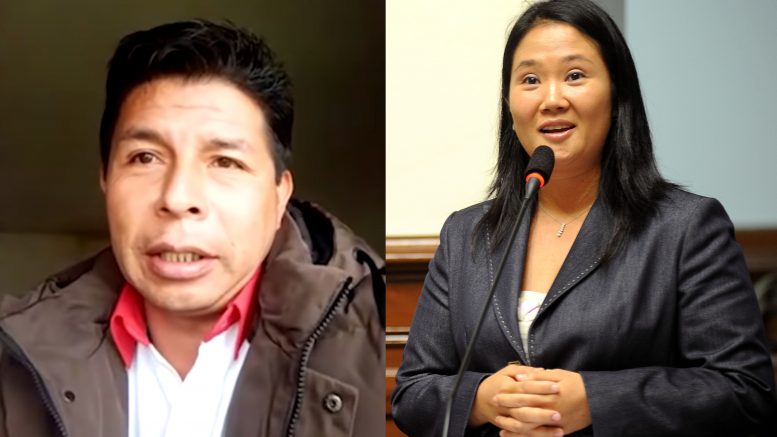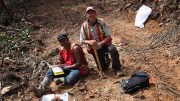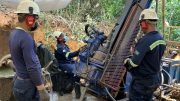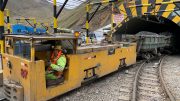A surprise win by a left-wing candidate in the first round of Peru’s presidential elections has alarmed foreign investors and the mining sector. But the bigger threat could be the continuation of the political gridlock that has gripped the country since 2017.
Having emerged the most popular candidate among a record field of 18 candidates, Pedro Castillo, a former primary school teacher and union leader, remains the favourite to win a run-off vote on June 6. His rival, conservative Keiko Fujimori, has worked hard to close the double-digit lead that opened immediately after the April 11 elections, but appears to have run into a ceiling of support, Claudia Navas, an analyst at Control Risks, told The Northern Miner in an interview on May 26.
For now, poll results are too disperse to judge who will win.
While a May 21 poll by Ipsos Peru gave Castillo a four-percentage point lead over Fujimori, one undertaken four days later by Lima-based market research firm Datum International and Gestion newspaper, reduced that gap to just one point.
The uncertainty is causing sleepless nights for investors alarmed by Castillo and his Peru Libre party’s radical political program, which includes tearing up Peru’s 1993 conservative constitution, hiking taxes and nationalizing strategic businesses, including major mines.
Hailing from northern Cajamarca province, Peru’s poorest, Castillo’s firebrand speeches, disregard for orthodox economic policy and promises to ramp up spending on welfare and education have caught the imagination of voters battered by the Covid-19 pandemic and tired of a divided and corrupt political elite.
Following the start of the Covid-19 outbreak in March last year, then-President Martin Vizcarra ordered one of the strictest lockdowns in Latin America to contain the virus. The nationwide lockdown caused the Peruvian economy to shrink by an unprecedented 30% in the second quarter of last year, but still failed to stop the disease spreading as tens of thousands of rural migrants, mostly employed in the large informal sector, fled the cities taking the virus with them.

Anglo American’s Quellaveco copper project in Moquegua region, Peru. Credit: Anglo American.
The official response to the health crisis has been further hampered by political score settling between lawmakers and the executive. Last November, Vizcarra became the second successive president to be impeached by Congress over alleged corruption charges. Following huge protests against the sacking of a popular president, lawmakers chose respected economist and lawmaker Francisco Sagasti to hold the fort until a new government and legislature could be elected this year.
But while voters may be focused on his welfare measures, for investors the concern is the promise in Castillo’s party program to nationalize the country’s richest mineral assets, including Southern Copper’s (NYSE: SCCO) Cuajone mine, the Antamina deposit owned by BHP (NYSE: BHP; LSE: BHP; ASX: BHP), Glencore (LSE: GLEN) and Teck (TSE: TECK.A/TECK.B; NYSE: TECK) and Camisea, the country’s largest natural gas field.
Although he has cooled his rhetoric on nationalizations in recent weeks as he strives to attract undecided electors, promising higher taxes rather than expropriation, what he would actually do if elected remains unclear.
“I don’t think even he knows how he is going to change the rules,” Xennia Forno a mining lawyer at Rubio Leguía Normand told The Northern Miner on May 24.

Processing equipment at Southern Copper’s Toquepala copper mine in southern Peru. Credit: Southern Copper.
The uncertainty comes at a critical time for the country’s mining industry, which is already the world’s second-largest source of copper and a major producer of gold, silver, lead, zinc, and tin. Following the recovery in metals price from 2017 onwards, investment reached a record US$1.4 billion last year thanks to major copper projects like Anglo American’s (LSE: AAL) Quellaveco and Mina Justa (owned by tin miner Minsur and Chile’s Empresas Copec.
With copper prices now at record levels, many companies are eyeing further investments, which could lift production to over three million tonnes annually over the next decade.
While a majority of the new lawmakers might support higher taxes, targeting tax hikes just at foreign-owned companies as Castillo has proposed would require changing the constitution, which currently bans discrimination between foreigners and residents, she notes. But designing, debating, and approving a new constitution would likely take several years.
Expropriating foreign-owned mines would be even more fraught, given the divisions in Congress, says Navas.
Mining executives hope that Castillo will moderate even further once in office, following the example of Ollanta Humala who reached an agreement with the mining industry over higher taxes soon after taking office in 2011.
“Leftist presidents elected in the past have realized quickly how important mining is to the economy,” points out Graham Carman, CEO of Tinka Resources (TSXV: TK; US-OTC: TKRFF), which is advancing one of Peru’s largest undeveloped zinc deposits.
Peru’s National Mining, Energy and Oil Association refused to comment for this article.
But the greater danger with whoever wins the vote may not be what they can do, but what they can´t.
Relations between the 130-seat legislature and the executive are likely to remain strained and neither Castillo’s Peru Libre (37 seats) or Fujimori’s Fuerza Popular (24 seats) have anything close to a majority necessary to push through a government program.

Drillers at Tinka Resources’ zinc-tin project in Peru, 200 km northeast of the capital city of Lima. Credit: Tinka Resources.
Instead, the government may exhaust itself seeking to build alliances or cede control of the legislative agenda to populist lawmakers. And having turfed out two of the last four presidents, Congress may be tempted to do so again, especially given the corruption charges already being levelled against both candidates before they have even taken office.
Castillo is accused of links to the Shining Path terrorist organization.
Fujimori, who has already spent in time in jail while she was investigated over money-laundering charges, also faces criticism over her support for her father Alberto, a former president now jailed over human rights abuses.
“We think whoever wins will find it very hard to finish their mandate because of the gridlock in the legislature,” says Navas at ControlRisks.





Be the first to comment on "Peru voters divided ahead of June 6 presidential election"